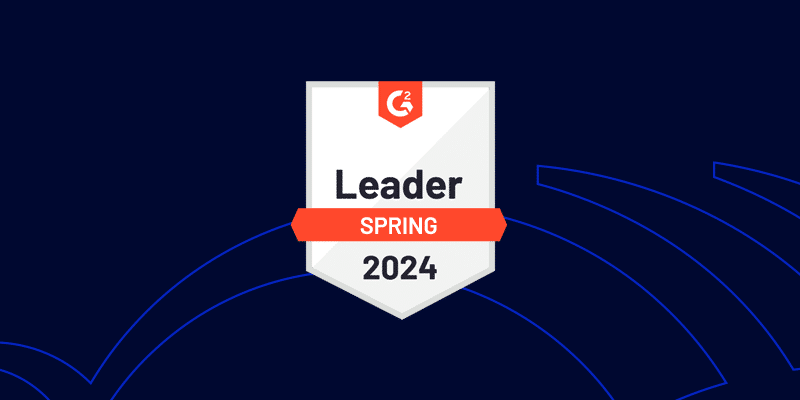How SaaSOps Engineers Use SaaS Management Platforms
April 2, 2021
6 minute read

If you’ve ever wondered what SaaSOps professionals do, and how they use SaaS management platforms, this post is for you.
To help other aspiring SaaSOps professionals, read on for:
- The role of a SaaSOps engineer
- SaaS utopia where a SaaSOps engineer works
- A typical work day
- How SaaSOps engineers use SaaS management platforms (SMPs)
But first, let’s make sure everyone knows how SMPs help enterprise IT.
An SMP helps enterprises reduce overall costs and risk in their SaaS environment
So what do SMPs help businesses with? They optimize SaaS. They increase IT efficiency. They enhance visibility, and they reduce security risk. This is vital because SaaS creates a massive, complex, interconnected data sprawl that grows by the day.
Take a minute to think about all the data objects in SaaS. Now think about how they reference, interact with, control, or rely on each other. It’s everything like users, groups, mailboxes, files, folders, records, contacts, calendars, third-party apps, logs, metadata, permissions, devices, etc. These are the very building blocks of any and all SaaS apps—and they make up the foundation of SaaS operations.
These building blocks are always growing. They are an ever-expanding app, user, and data universe. And when left unchecked, challenges emerge around discovering, managing, and securing it all.
SMPs finally give IT teams a complete understanding of critical SaaS apps, users, and their files. They yields actionable insight to:
- help reduce SaaS spend and right-size deployment,
- save time by centralizing management and automating routine operational tasks,
- keep data safe by embedding security best practices.
And for good measure, they protect organizations against unauthorized data access, data loss, and data theft.
So when learning about how our SaaSOps engineer is actually using an SMP for SaaS operations, keep in mind what they’re designed to do.
What’s a SaaSOps engineer?
A SaaSOps engineer is a multi-faceted IT team member who owns implementation, support, and evolution of SaaS environments. This special engineer is gifted with both technical and people skills, like strong communication skills, razor-sharp analytical abilities, and creative strategic thinking.
Related: Proficiency in SaaSOps and BetterCloud is no longer a “nice to have” but required for many SaaS-powered companies. Read more about the BetterCloud certification here.
SaaSOps engineers do an uncommonly wide range of tasks
Here are just a few:
- Manage and coordinate automation projects and teammates
- Work with business units to sanction SaaS apps
- Automate, optimize, and connect SaaS applications using an SMP, standalone code, web hooks, or API integrations
- Program to automate mundane, boring, and manual tasks to enable teams across the organization to work on more engaging projects
- Work closely with security and compliance teams to keep employees and company IP secure without creating friction for end users
- Identify unused, underutilized, or misused SaaS licenses to reduce time and spend waste
- Document work with clarity to ensure compliance
And they’re the primary owner and user of an SMP. This crucial role is responsible for maximizing the value of it.
A typical day in the life of a SaaSOps engineer can vary from company to company
It can also change as an enterprise moves along the SaaS adoption continuum. And some companies move back and forth between phases, making it hard to nail down a typical day’s activities.
Acme Corp’s SaaS utopia
To illustrate a day in the life of a SaaSOps engineer, we tell the story of a company that is striving toward its SaaS utopia.
Meet Acme Corporation. Acme and its SaaSOps engineer are composites based on the characteristics, skill sets, and job responsibilities of dozens of SaaSOps professionals and modern IT orgs we’ve interviewed.
So let’s dive in. Acme is a financial services company that grew fast from dozens to thousands of users in the span of eight years. To enable fast growth without friction, outside a narrow core set of apps like Google Workspace, Box, and Microsoft 365, employees subscribed to any SaaS tools they wanted to use.
Fast forward to now, where they’re grappling with an ever-growing sprawl of SaaS apps.
Prior to using an SMP, Acme’s IT was very reactive. This means they mostly focused on keeping the lights on and handling support tickets as they were opened.
Now, using an SMP, they are working on gaining control and getting out in front of problems. They’re automating offboarding. They’re right-sizing super admin permissions to improve security and compliance, along with IT efficiency. They’re seeing big improvements with their SaaS operations.
So for Acme, SaaS utopia means efficiently and securely operating a consolidated and sanctioned set of SaaS apps that doesn’t come at the expense of employee productivity and satisfaction.
Each day along the SaaSOps journey brings new challenges and opportunities. To give you an idea of how a SaaSOps engineer spends their time, and how they use an SMP, we’ll take you through a typical day.
A day in the life of a SaaSOps engineer
After running app discovery using an SMP last week, Acme’s SaaSOps engineer learned some uncomfortable truths about what’s authenticating on their domain. Lurking in their SaaS environment were twice as many G Suite licenses than the number of employees. In addition, there are multiple Wiki documentation vendors along with far too many redundant project management apps.
To clean up SaaS operations, our SaaSOps engineer leans on the collaborative relationship growing between IT and the business. Gone are the days when IT existed just to solve tickets. It’s now replaced by a real relationship with business team leads where, together, they forge the best path that balances the needs of IT and the business.
And that balance?
For Acme, IT needs a central and consolidated tool set they can realistically support. This, of course, means using an SMP to manage and secure SaaS, automating on- and offboarding, and training IT support technicians on IT-sanctioned apps.
This IT need is then balanced against the business needs. The business leads obviously want to use the best tools available because it helps them do their jobs better and keep the best talent. And, of course, not all business teams have the exact same needs even if they use tools with similar use cases.
It’s up to the SaaSOps engineer to find the best balance between IT and various business teams.
10 am: Business team lead meeting to choose tool that’ll become IT sanctioned
To determine the best project management tools for all of Acme, our SaaSOps engineer meets with business team leads. Since nearly every team uses such a SaaS app, the first high-level meeting is with marketing, HR, and research and development.
The initial conversation is fairly general. Our SaaSOps engineer asks questions like, “Hey, you’re all using these tools and they all pretty much do the same thing. What are you thinking? What do you want to do with your project management app?”
After the high-level intro meeting, our SaaSOps engineer individually interviews business team leads to understand their distinct needs and help work through feature parity. When there’s complete feature parity, our SaaSOps engineer selects the app with pre-built integrations in their SMP.
After all, there’s a huge time savings for IT to standardize on SaaS apps where the SMP vendor builds, maintains, and enhances integrations.
11:30 am: InfoSec meeting for SaaS tool for security, governance, and policy approval
Right before lunch, our SaaSOps engineer now meets with the InfoSec team. The marketing team started using a content personalization SaaS app that will be a key part of operations—complete with handing it off to IT to become officially IT-sanctioned.
In this meeting, our SaaSOps engineer is working with InfoSec on the approval process.
Because every SaaS tool conceives of security differently, InfoSec assesses it to learn what data the tool captures and if that data is actually required. Should InfoSec determine that they are comfortable with the data shared with a vendor, the tool is then approved.
But sometimes there’s discussion between security and the SaaS vendor to arrive at acceptable terms. In these cases, our SaaSOps engineer documents terms to make sure there’s a common understanding among all involved parties.
Once Acme overcomes that final hurdle, our SaaSOps engineer integrates the newly approved SaaS app into the SMP.
1 pm: SMP review time
Right after lunch, using an SMP, our Acme SaaSOps engineer reviews license usage and audit logs to make sure that their automated employee offboarding in their Europe office occurred as intended.
2 pm: Create automations using an SMP
Finally, the day’s meetings are complete.
Fortunately, it leaves some good focus time for our SaaSOps engineer to dig into automations and workflow templates. Acme has been transforming a manual offboarding process into a standardized and automated offboarding process using a SMP.
Right now, our Acme SaaSOps engineer is building out user lifecycle management in BetterCloud. She started the task by writing a design document spelling out Acme’s approach to offboarding workflows.
To create an effective offboarding workflow, she has to think about a few things: Where are all the possible places that users might store data? What’s their source of truth? Are there any data retention requirements?
So far, she’s created an automated offboarding workflow that contains steps across Google Workspace, Jamf, Slack, Zoom, Zendesk, Salesforce, Asana, and LastPass. These include steps like “Lock User’s Device,” “Delete 2-step backup codes,” “Transfer Drive files,” “Revoke devices,” “Disable multifactor authentication,” “Set auto-reply,” and “Wait for 30 days” before deleting the user.
Since using an SMP isn’t static, as it always evolves, our Acme SaaSOps engineer is continuously auditing and improving workflows. As Acme’s SMP vendor BetterCloud improves, so do workflow actions and logic. For example, our Acme SaaSOps engineer increasingly uses “and/or” operators to program workflows using more precise logic.
5 pm: Another SaaSOps day is done
It’s time for our Acme SaaSOps engineer to stop using the SMP for the day.
It’s been another interesting day. By working with the business team leads, our Acme SaaSOps engineer selects the SaaS tool that best balances IT and business needs.
Another SaaS app is through the security review.
And the afternoon is spent writing some code, creating integrations between tools, and building workflows. All to make processes like onboarding easier and people’s lives a little easier. After all, it’s very rewarding to identify a problem and then get creative about solving it.
Want to learn more about how you can develop a SaaSOps practice and discover, manage, and secure your SaaS environment with an SMP like BetterCloud? Click here to schedule a demo.





